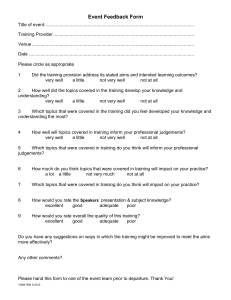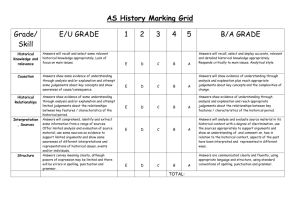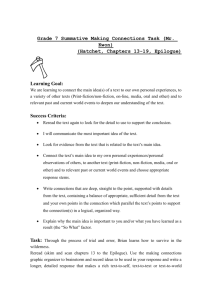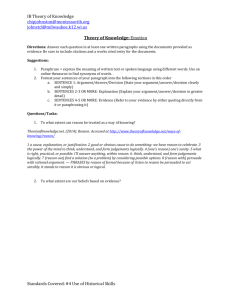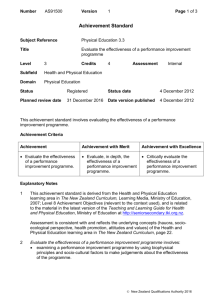How To Analyze a Case - KFUPM Open Courseware
advertisement
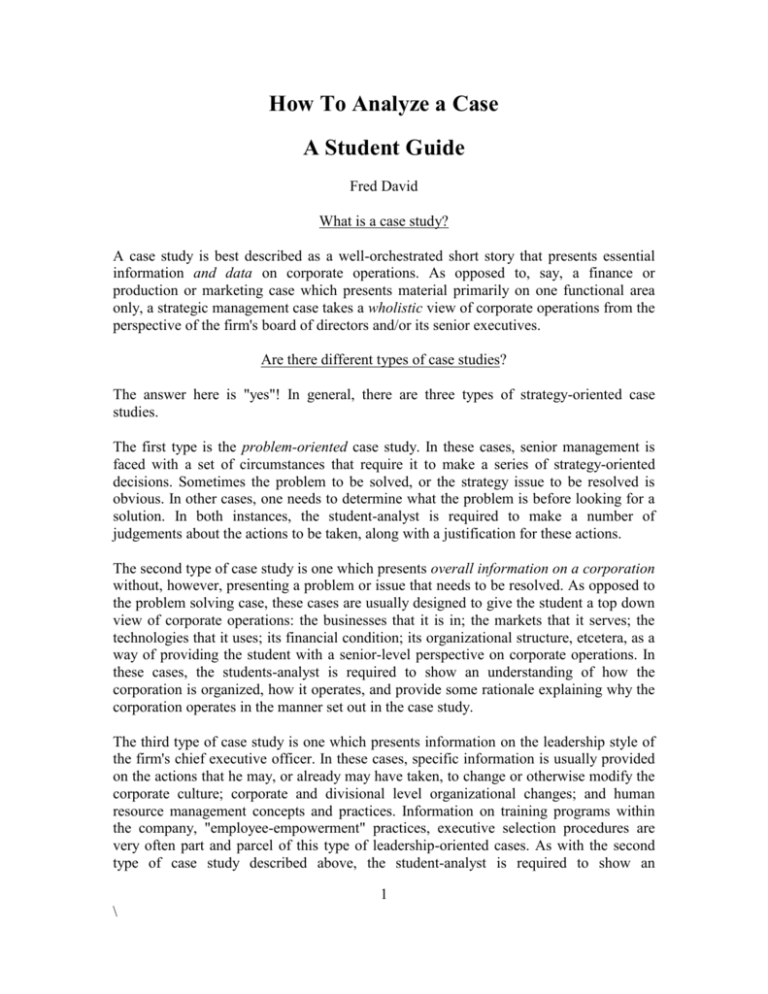
How To Analyze a Case A Student Guide Fred David What is a case study? A case study is best described as a well-orchestrated short story that presents essential information and data on corporate operations. As opposed to, say, a finance or production or marketing case which presents material primarily on one functional area only, a strategic management case takes a wholistic view of corporate operations from the perspective of the firm's board of directors and/or its senior executives. Are there different types of case studies? The answer here is "yes"! In general, there are three types of strategy-oriented case studies. The first type is the problem-oriented case study. In these cases, senior management is faced with a set of circumstances that require it to make a series of strategy-oriented decisions. Sometimes the problem to be solved, or the strategy issue to be resolved is obvious. In other cases, one needs to determine what the problem is before looking for a solution. In both instances, the student-analyst is required to make a number of judgements about the actions to be taken, along with a justification for these actions. The second type of case study is one which presents overall information on a corporation without, however, presenting a problem or issue that needs to be resolved. As opposed to the problem solving case, these cases are usually designed to give the student a top down view of corporate operations: the businesses that it is in; the markets that it serves; the technologies that it uses; its financial condition; its organizational structure, etcetera, as a way of providing the student with a senior-level perspective on corporate operations. In these cases, the students-analyst is required to show an understanding of how the corporation is organized, how it operates, and provide some rationale explaining why the corporation operates in the manner set out in the case study. The third type of case study is one which presents information on the leadership style of the firm's chief executive officer. In these cases, specific information is usually provided on the actions that he may, or already may have taken, to change or otherwise modify the corporate culture; corporate and divisional level organizational changes; and human resource management concepts and practices. Information on training programs within the company, "employee-empowerment" practices, executive selection procedures are very often part and parcel of this type of leadership-oriented cases. As with the second type of case study described above, the student-analyst is required to show an 1 \ understanding of the rationale for each of these separate strategic policies and actions, and how these contribute to the overall strength of the corporation. There may, of course, be other types of strategy case studies but virtually all of them will fall into one of the three categories described above. Some case studies will, of course, contain segments which incorporate information and data relevant to each of the types described above. However, the overall focus of the case study will, in most instances, fall quite distinctly within one of the three categories noted above. Are there other types of case studies? The answer here is most likely yes. These variations, however, don't show up very often in the literature of the field. Living with the information set out in the case. Except as you are required to do some additional research on the company or industry featured in the case study at hand, make every effort to live with the material presented in the case. A word of explanation is essential here. When presented with a case study, whether it be a strategy, manufacturing, marketing, finance or other type of case, many students try to make judgements on matters for which no information or data has been provided! The best way to avoid this error is to review what you have written (or the notes that you have made on the case) and ask yourself a very basic question; what information is in the case that supports the judgements or conclusions that I have made? Very often, the answer will be "very little", that is to say, you were being intuitive as opposed to objective in your approach to the project at hand! A good case analysis is an objective one in which you don't reach for solutions or judgements for which there is no basis in the material with which you have to work. Looking for a central issue or problem. Study hint! Be patient and read the case through once in its entirety before taking notes and trying to make judgements about the material that is set out in the case. After you have done that, push yourself to come to an understanding of why the author wrote the case and his teaching goal for it. In other words, see if the case fits into one of the three categories noted above. By doing this, you will get a better handle on the case, and be better prepared to discuss the strategy-oriented material set out before you. Asking yourself a series of questions will also help. For example: Does the case present a problem or series of problems to be solved? 2 \ Does the case present an overview of the role of the CEO in bringing about change? Does the case present a more generalized view of the scope and content of the businesses and markets that the firm is in? Once you have come a reasonable conclusion here, you can more readily absorb the material in front of you and maximize the learning process that is the basic goal of any case study. General hints, clues and suggestions There are a number of methodologies useful in the analysis of strategy-oriented cases that are normally incorporated into strategic management texts. Having read the case through once, make a quick check through your textbook to see if the information in the case relates to the concepts discussed in the book. If the case write-up is problem-oriented, and you are being asked to solve the problem, avoid the "boss is dumb syndrome". Most senior executives know what they are doing, and why they are doing it. More often than not, they choose a reasonable course of action for the company based on the facts (and economic and market conditions) as they then know them. Don't try to second guess them. Rather build on what they have done as a way of enhancing your own background and skills. If the case write-up is more general in its scope and content, prepare an summary outline of the case using, where relevant, headings such as: leadership style; human resource policies; markets and marketing policies; technological issues; globalization trends; mission statements; etcetera. If there is no "problem" to be solved, the best approach here is to do (a) an analysis of the contents of the case while (b) assessing the probable teaching goals for the case assumed by your instructor. Given all of the above, it is safe to assume that there is no one right answer to a case analysis. At best, there are answers or solutions that are reasonable given the data and information at hand. But they are only reasonable if there is information and data that can be used to back up your conclusions. This means, parenthetically, that you need to do a reality check on yourself and your work from time to time. Compare the facts as presented in the material in the case with your completed analysis. Do the facts support your conclusions? Are you sure? This latter point leads to a final one. And that is that you can learn a lot from your peers, if only you will discuss their work and yours with them. The reality of most case writeups is that they contain an awful lot of complex material and data that is not as easily analyzed and understood as one would like. Moreover, any serious analyst brings his own background to the case study. If he is a finance person, he'll look to the numbers first as a way of getting at the required case analysis. If he is a marketing person, he'll look to 3 \ marketing policies and practices first and probably concentrate on them. Since you are neither expected to, nor can you. in fact, know everything that you would like to know, getting into a work sessions with your peers can be a time-saving way of maximizing the learning process (and your grade). Try to find time for it before you set your final ideas, analyses, and solutions into concrete. Remember here that this is what you will be expected to do once you are in the corporate world. Why not take advantage of the time and freedom that you now have to get an early leg up on the stresses, strains, and benefits of working in a group of interested (and interesting) people. 4 \
